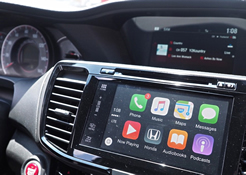
As literally billions of devices are connecting with cellular networks, the Internet of Things (IoT) is fast becoming a focus of many industries. To take advantage of the opportunity, CIOs are prioritizing IoT and investing heavily in connected devices and related services.
This quick overview provides a glimpse of IoT and what businesses can expect going forward.
How big is the Internet of Things?
Many businesses and consumers are already using connected services. For example, most newer vehicles now use embedded WiFi to connect with IoT services that integrate smartphone contacts and entertainment preferences into the driving experience.
Google’s Nest Labs, Honeywell, and Belkin have all developed smart home products. Homeowners can automate controls such as door locks, thermostat, lights, and maintenance alerts from a smoke detector—from an app on their smartphone.
And for years, businesses have been using machine-to-machine connectivity for manufacturing, robotics and more. But the new age of IoT is rapidly evolving into many more industries and use cases.
Internet of Things connected devices have become a must-have in many industries from agricultural and industrial manufacturing to transportation and auto insurance. Smart Cities initiatives include tracking parking availability in real-time, and monitoring roads and bridges electronically. Smart Grid solutions monitor energy consumption and help reduce the risk of outages.
Many companies are using IoT to improve logistics and operations, track and manage equipment, and monitor conditions within factories or office buildings. Businesses are now remotely managing thousands of devices nationwide or globally, automating alerts and performance standards to keep things running smoothly.
For example, a vending machine firm can keep machines full and functioning using IoT services to detect inventory needs, and automatically order products and schedule deliveries.
Top 5 tips about the Internet of Things
1. IoT is growing and will continue to grow
In 2008, there were already more devices connected to the internet than there were people on Earth. By 2030, it’s expected there will be more than 25 billion connected devices.
2. IoT enhances customer experience
Despite its name, the Internet of Things is ultimately about people and service, not necessarily “things.” Connected devices can provide innovative new benefits that combine monitoring, communications, and analytics. IoT can also enable businesses to identify usage patterns and proactively engage with customers in tailored ways.
3. IoT promises new ways to solve tough problems
While the limitless potential of IoT is fascinating, the value of IoT will come from addressing concrete consumer and business needs. Best to avoid the “shiny object”; start with a clear statement of the problem and consider IoT as one way of addressing it.
4. IoT will produce a deluge of new data
The Internet of Things is already transforming operational and organizational requirements. It’s imperative to have strategies for monitoring and managing this data, and analyzing the data to obtain actionable insights.
5. IoT delivers cost savings and more
For many companies, the return on investment of IoT is coming from driving down costs and improving operational efficiency. Add to that the vast potential to create new revenue streams, engage with customers in unprecedented ways, and innovate new business models.
This article is the first in a four-part IoT series on our blog.
Bottom line: IoT is the driving force toward a more connected world, benefiting businesses and consumers alike. It’s more than just the next big thing; you can consider IoT the future status quo.
Read more in our IoT series:
Pt 2: 4 ways the Internet of Things is transforming customer experience
Pt 3: Banking and IOT – The Internet of Things will redefine financial services
Pt 4: How the Internet of Things will change the future of marketing

